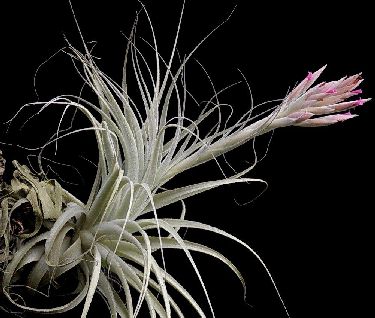
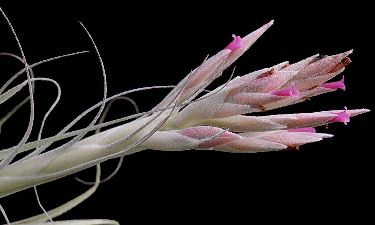
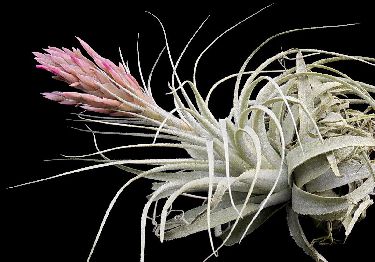
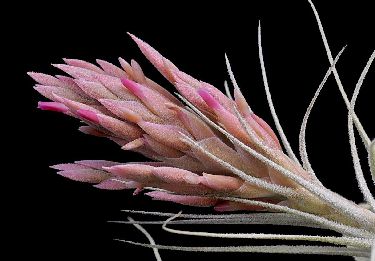
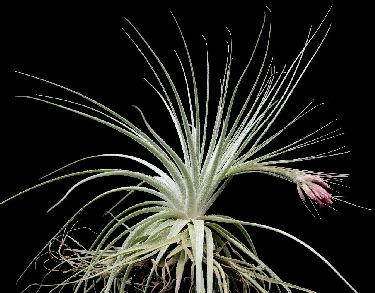
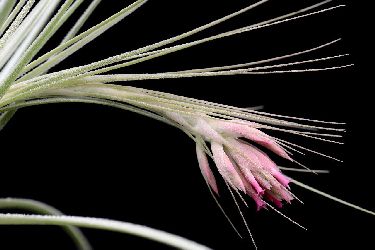
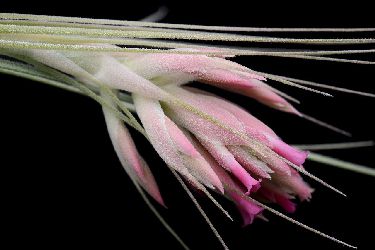
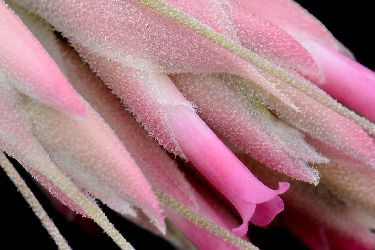
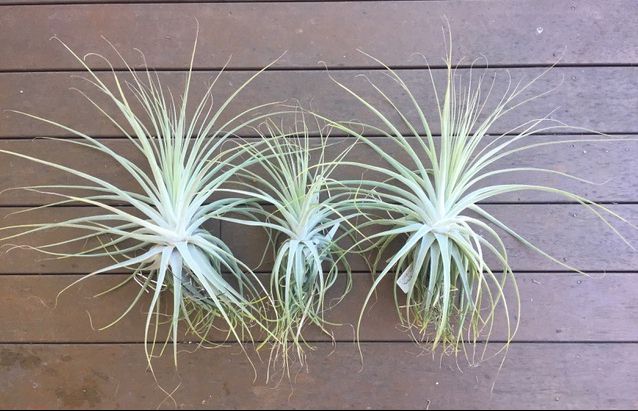
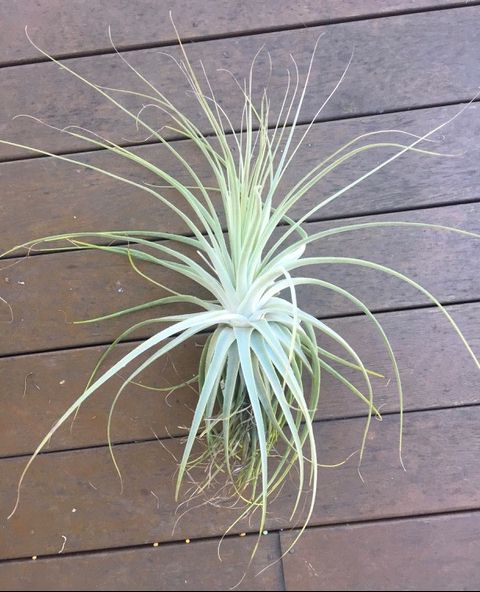
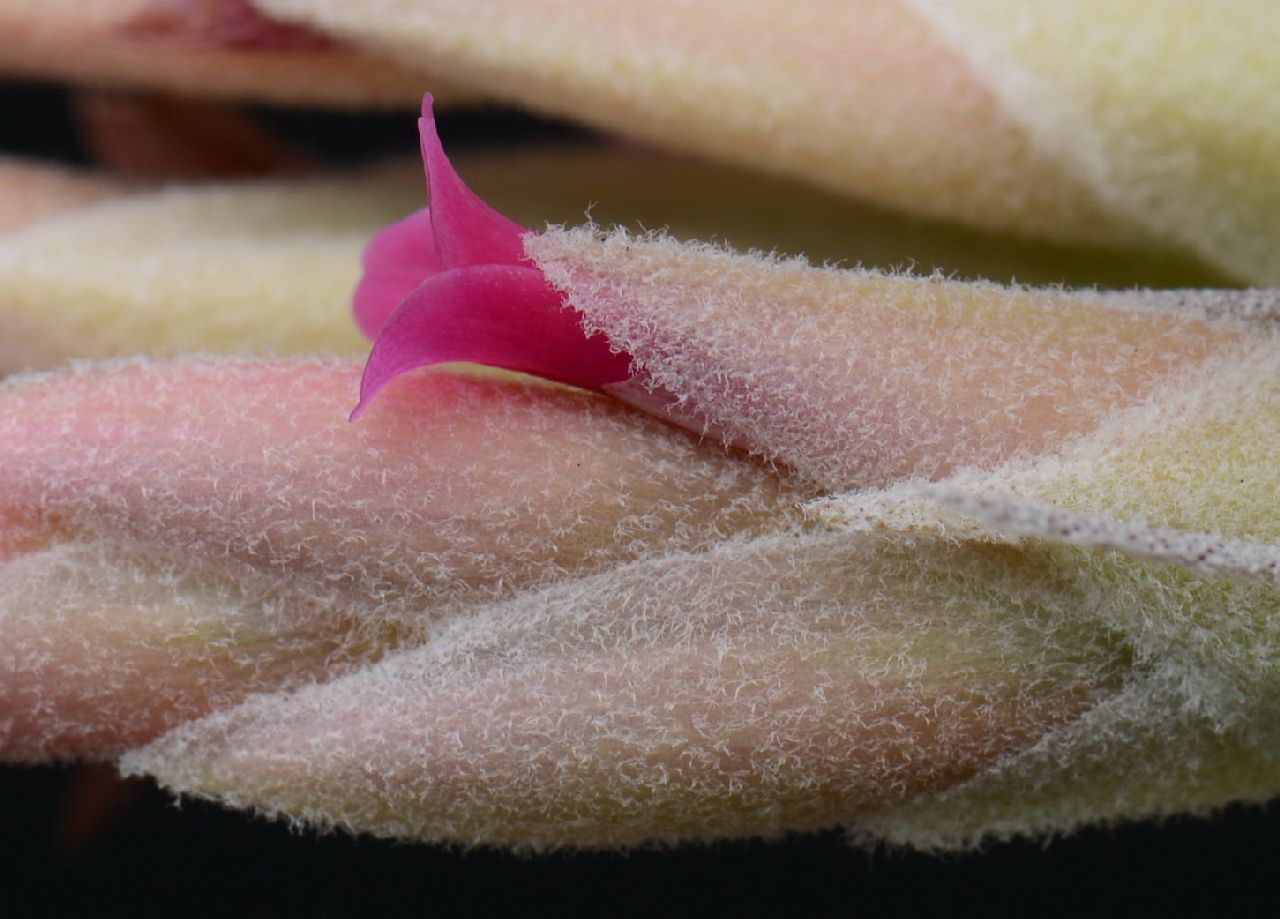
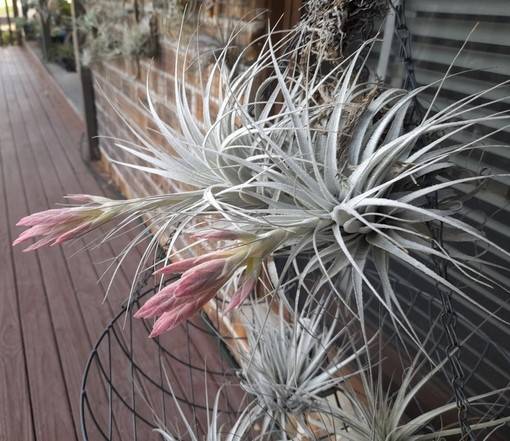
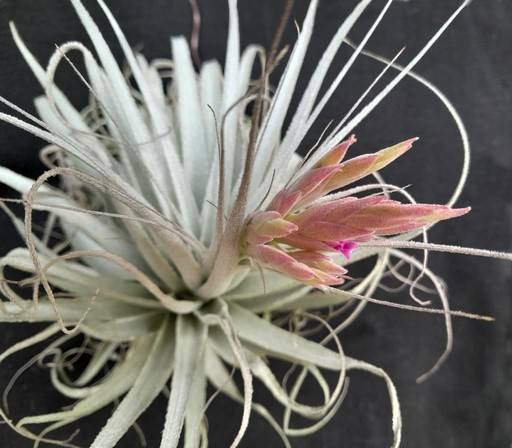
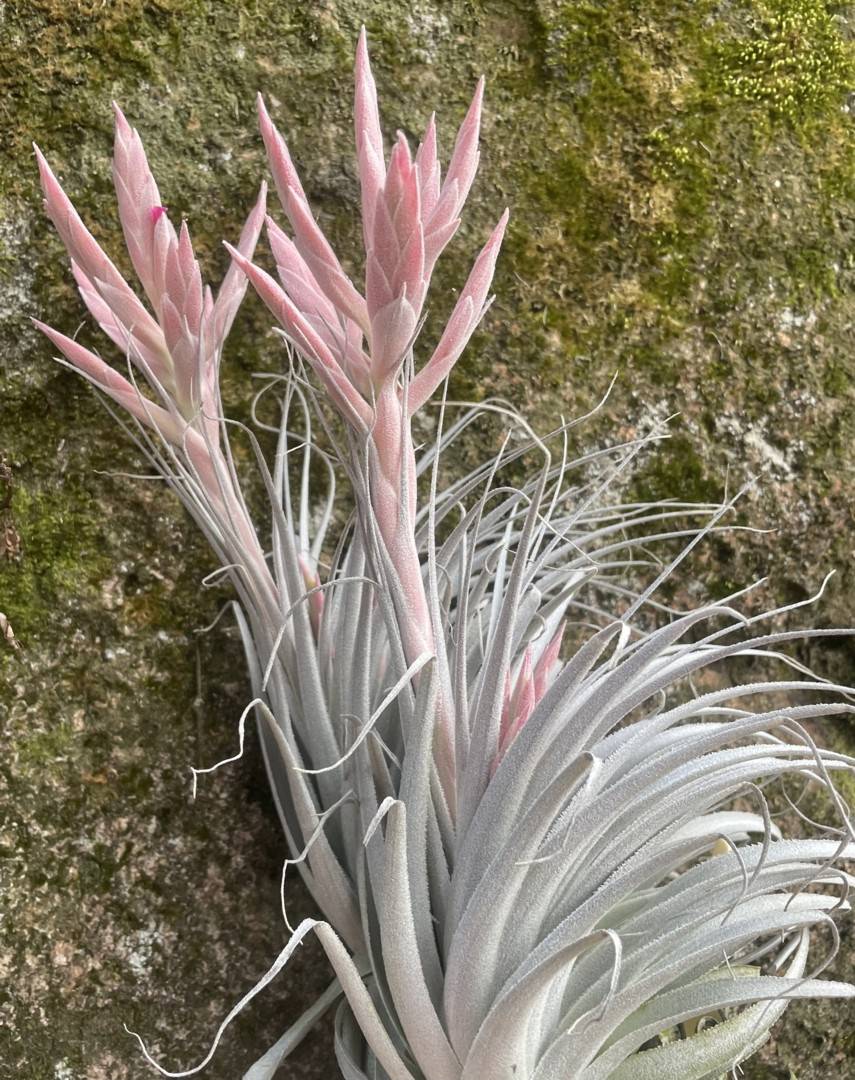
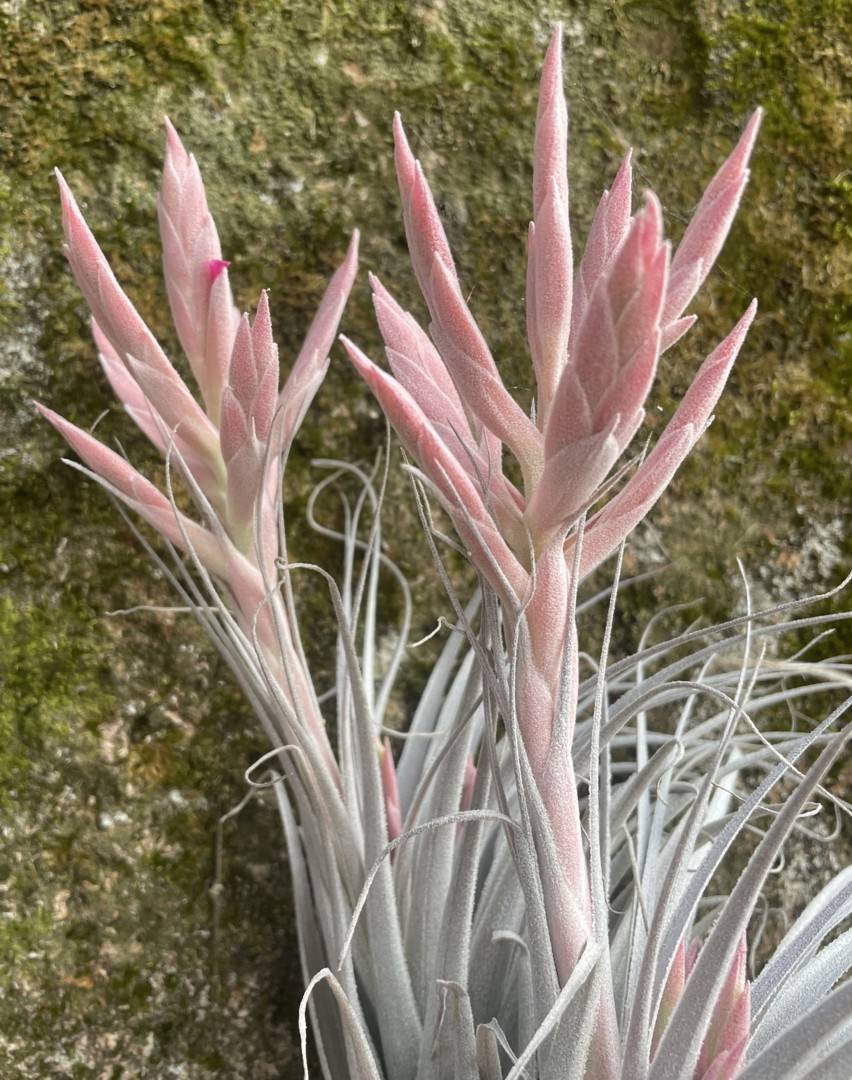
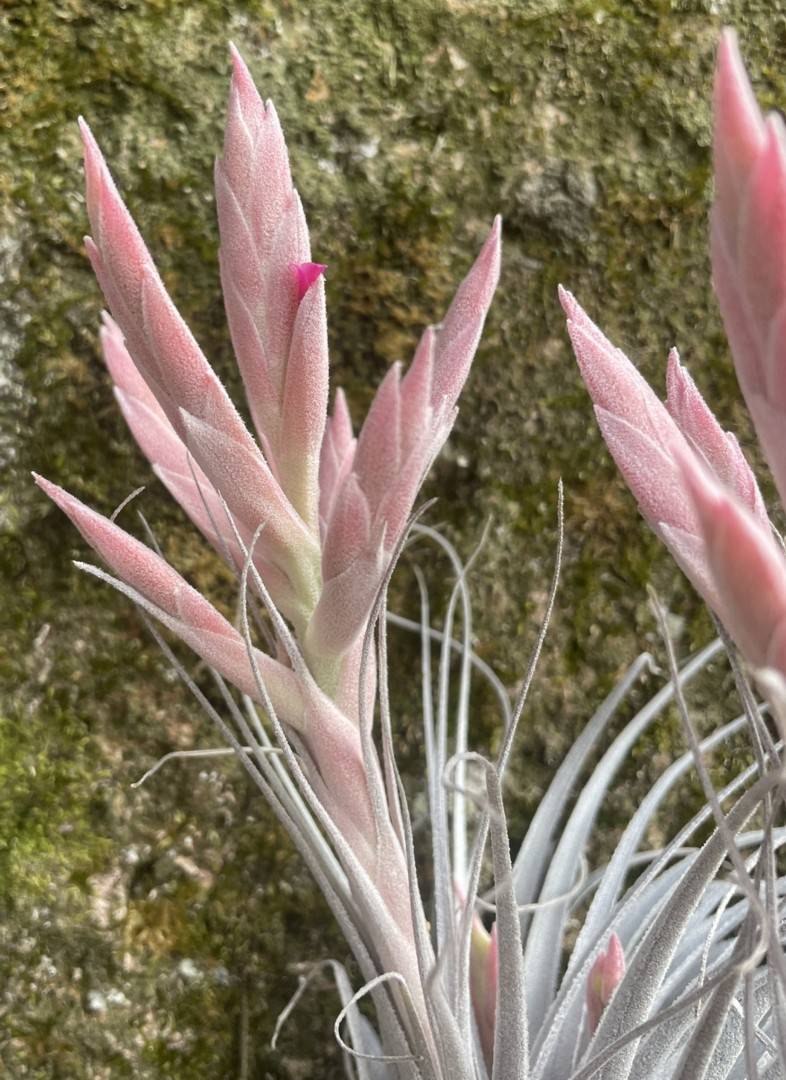
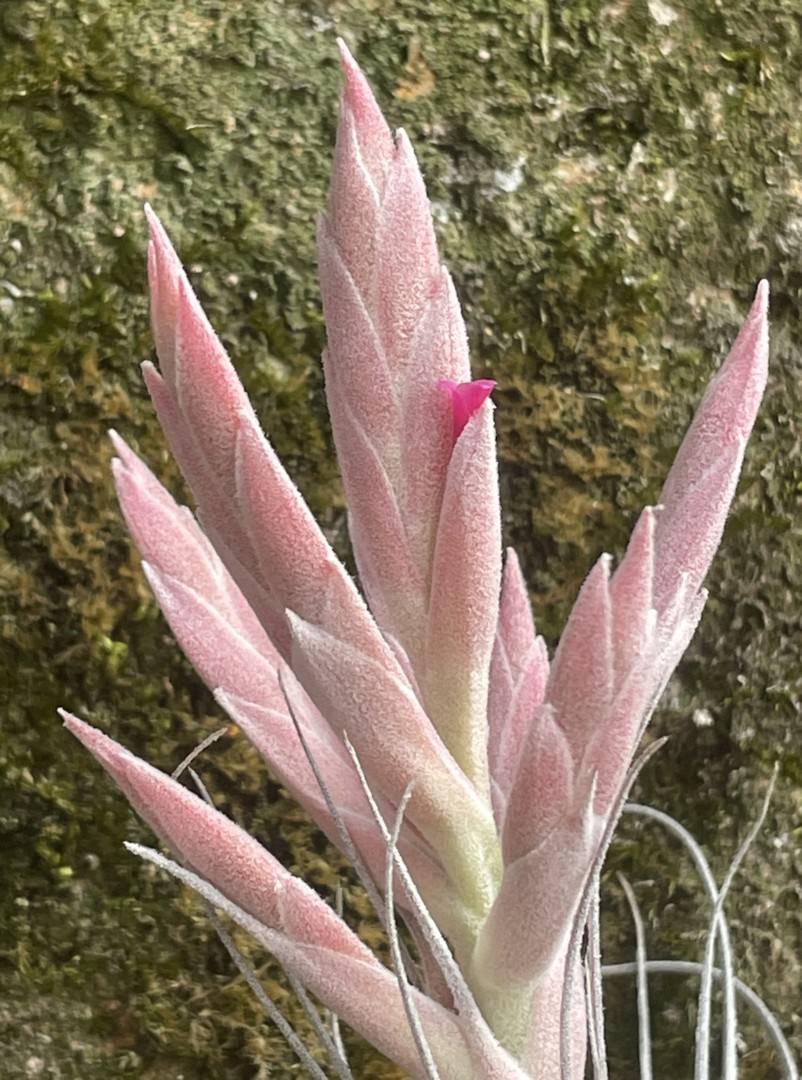
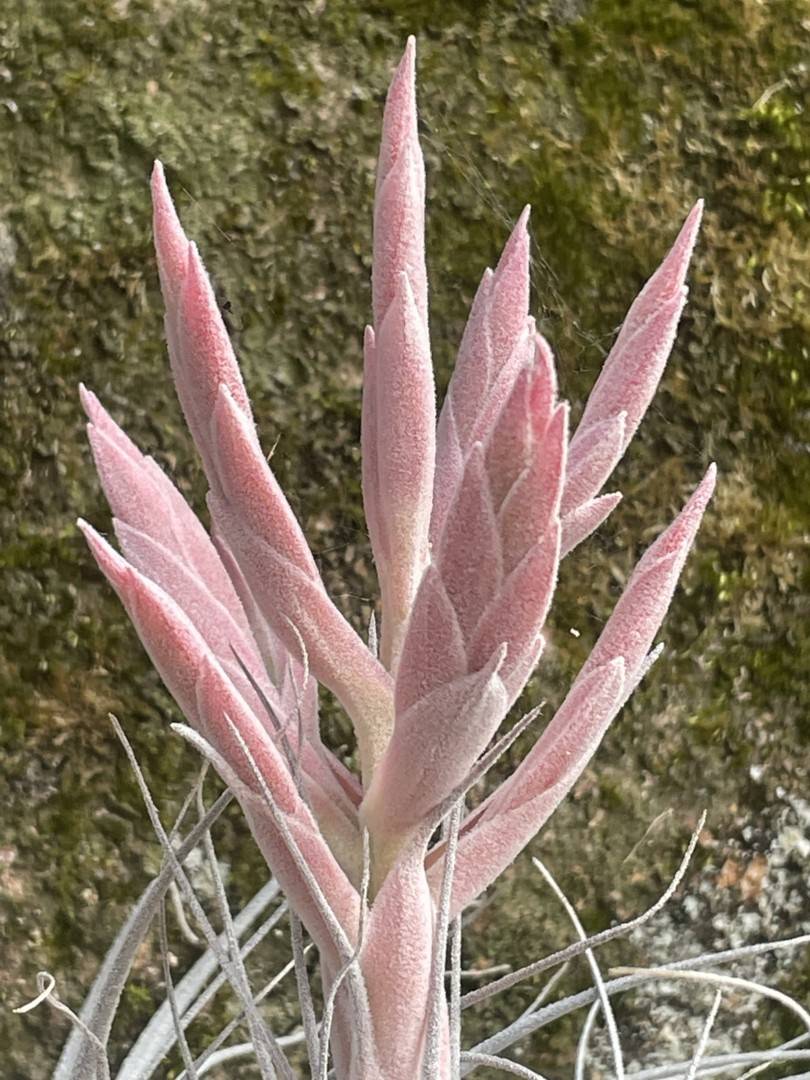
Holotypus: Rauh 56 545 (Aug. 1981), HEID
Habitat et distributio: terricola in rupibus arenaceis prope cataractam Morro do Chapeu, Brasilia, una cum forma permagna Tillandsiae strictae Sol. et Tillandsiae horstii Rauh itemque cum speciebus terricolis generis Hohenbergia et Velloziaceae.
Plant forming clumps, growing on sandstone, single plant flowering to 25cm high.
Leaves numerous, making a broad to erect rosette,
Sheath not distinct, white, ca. 1.5cm long, 1.5 cm wide, lepidote.
Blade narrow triangular, to 20 cm long, 1.5 cm wide next to sheath, channelled, gradually narrowing to a thin, erect or the upper half with a reflexed tip, both sides very densely white scaled, for that reason the leaf seems snowy white, the scales eccentric, the leaf edges with longer wing like scales.
Scape erect, 0.5 cm thick, densely enclosed by leaf like scape bracts.
Scape bracts with pink sheath and longer filiform blade.
Rhachis edged, 3mm thick, lepidote.
Inflorescence erect, laxly bipinnate to sub digitate, with ca. 8 diverging to erect spikes.
Primary bract ovate acuminate, to 2 cm long, pink, thin, topside almost naked, underneath dense scaled, shorter than the spike.
Spike narrow lineal, complanate, to 4 cm long, 1cm wide, short ( 0.7cm) stemmed, 4 to 6 flowered, with 1to2 sterile bracts at base.
Flower sub sessile, to 2.3 cm long.
Floral Bract beginning as dense imbricate, later lax so that the green lepidote rhachis is visible, keeled at tip, long – lanceolate – acuminate, 1.8 cm long, pink, dense sparrig lepidote, exceeding the sepal.
Sepal 1.5 cm long, posterior ones carinate, the tip pink and naked, green towards the bottom and scattered lepidote, almost free.
Petal lively carmine red, ca. 2cm long, ligulate, the tip weakly reflexed and shallowly notched, the bottom white.
Stamens and Style much enclosed.
Filament ribbon like, not plicate, with yellow anther.
Stigma lobes shorter than the anthers.
Type locality near waterfalls, Morro do Chapeu, Brazil
Differs from T. gardneri in-
1. Leaves narrower and more robust.
2. Scape erect and rigid.
3. Inflorescence laxly elongate not capitate elliptic
T. chapeuensis is a very decorative plant, whose leaves are pure white because of the dense scales, moreover they are not soft and laxly hanging, like T. gardneri ( fig. 15, right; fig. 17,) but usually stiffly erect and weakly succulent.
The inflorescence is not capitate, (fig. 15; fig. 16, right), but elongate (fig. 15, left; fig. 16, left). T. chapeuensis is known only from the type locality up to now.
Because of the terrestrial growing and the branched inflorescence T. chapeuensis is similar to T. gardneri Lindl. var. rupicola Pereira but is distinguished by the long stem, the secund leaf formation and the white flowers. Moreover, the var rupicola only comes from the island Farol at Cabo Frio (state Rio de Janeiro) see ( Fig. by E. Pereira, photo III, in: “Species novas in Brasilia Bromeliacearum XVIII, Bradea, VOL. III, 27, 1981.)
Key to Brazilian Tillandsias, with red or pink petals from Die Bromelie, Sonderheft 3 1996
1. Stamens - exceeding the flower tube => paraensis
- included in the flower tube => 2
2. Leaf blade - filiform and grasslike => globosa
- triangular => 3
3. Plant - 4 - 8 cm in diameter => 8
- 10 - 25 cm in diameter, forming a more or less spreading rosette, stemless => 4
4. Floral bracts - lepidote => 5
- glabrous or nearly so: Plant 6 - 15 cm diameter, inflorescence elliptic or globose, spikes elliptic, sublax with 1 - 3 (- 5) flowers, floral bracts carinate, glabrous or punctulate lepidote, sepals glabrous => roseiflora
5. Inflorescence - elliptic or subglobose => 6
- elongate => 7
6. Leaves - soft, green or reddish, appressed lepidote, spike lax, 2 - 4 flowered, floral bracts shorter than sepals, petals red - violet => geminiflora
- soft, grey, densely lepidote with spreading trichomes, spikes dense, 3 - 12 flowered, floral bracts densely lepidote, exceeding the lepidote sepals => gardneri
7. Leaves - subsucculent, stiff, inflorescence with 4 - 6 spikes => chapeuensis
- Plant only 11 - 13 cm in diameter, an open silvery star-shaped rosette, leaves appressed lepidote, inflorescence with 5 - 7 spikes => grazielae
8. Plant - short - caulescent => 9
- stemless, forming an erect, often subbulbose rosette, leaves often somewhat secund, inflorescence elliptic or subglobose, flowers red or violet, filament not plicate => 10
9. Plant - 3 to 5 cm in diameter, pine cone shaped, dorsiventral, pendant, leaves green, silvery appressed lepidote, inflorescence simple, distichous => reclinata
- 4 to 8 cm in diameter, an erect-secund rosette, the basal leaves recurved, leaves cinereous-lepidote, inflorescence compound, spikes lax, floral bracts carinate, shorter than the lepidote sepals, the posterior ones carinate and 4 mm connate => sucrei
10. Floral bracts - glabrous or nearly so => 14
- lepidote => 11
11. Inflorescence - simple => 12
- bipinnate: Leaves channelled, regularly lepidote with coarse cinereous scales, inflorescence with up to 8 spikes which are laxly 3 - 4 flowered, the posterior sepals carinate, 1/3 to 1/2 connate, lithophytic growing at sea level => brachyphylla
12. Inflorescence - with polystichous flowers => 13
- with distichous flowers: Plant ca. 4 cm in diameter, short caulescent, small pine cone shaped, pendant, leaves grey appressed lepidote => reclinata
13. Leaves - secund, thin and soft, grey with appressed trichomes, looking like grey velvet, scape densely lepidote, inflorescence simple, sometimes compound of up to 3-flowered spikes, floral bracts carmine-red, sepals slightly lepidote, free, posterior ones carinate, petals violet-rose => heubergeri
- Leaves not secund, subsucculent, green, covered with coarse grey scales, plant pendant, floral bracts rose, sepals more lepidote, petals pink => thiekenii
14. Posterior sepals - not carinate => 15
- carinate => 16
15. Leaves many, green-grey, densely lepidote with irregular cumulated coarse trichomes, appearing rough pruinose, epiphytic at sea level => sprengeliana
- Leaves many, narrow triangular, with appressed trichomes, appearing metallic, epiphytic 700 - 1000 m => kautskyi
16. Plant - 2.5 to 5 cm in diameter, rosette of broadly triangular leaves with shorter blade, very densely and regularly silvery subpruinose lepidote, appearing like silvery velvet, sepals carinate and short connate, lithophytic 1800 - 2200 m => organensis
- Plant bigger, up to 15 cm in diameter, rosette often bulbose, leaves grey - green appressed grey lepidote, appearing like grey velvet, bipinnate with 1 - 3 (-5 ) flowered spikes, floral bracts conspicuously carinate, posterior sepals carinate, epiphytic => roseiflora